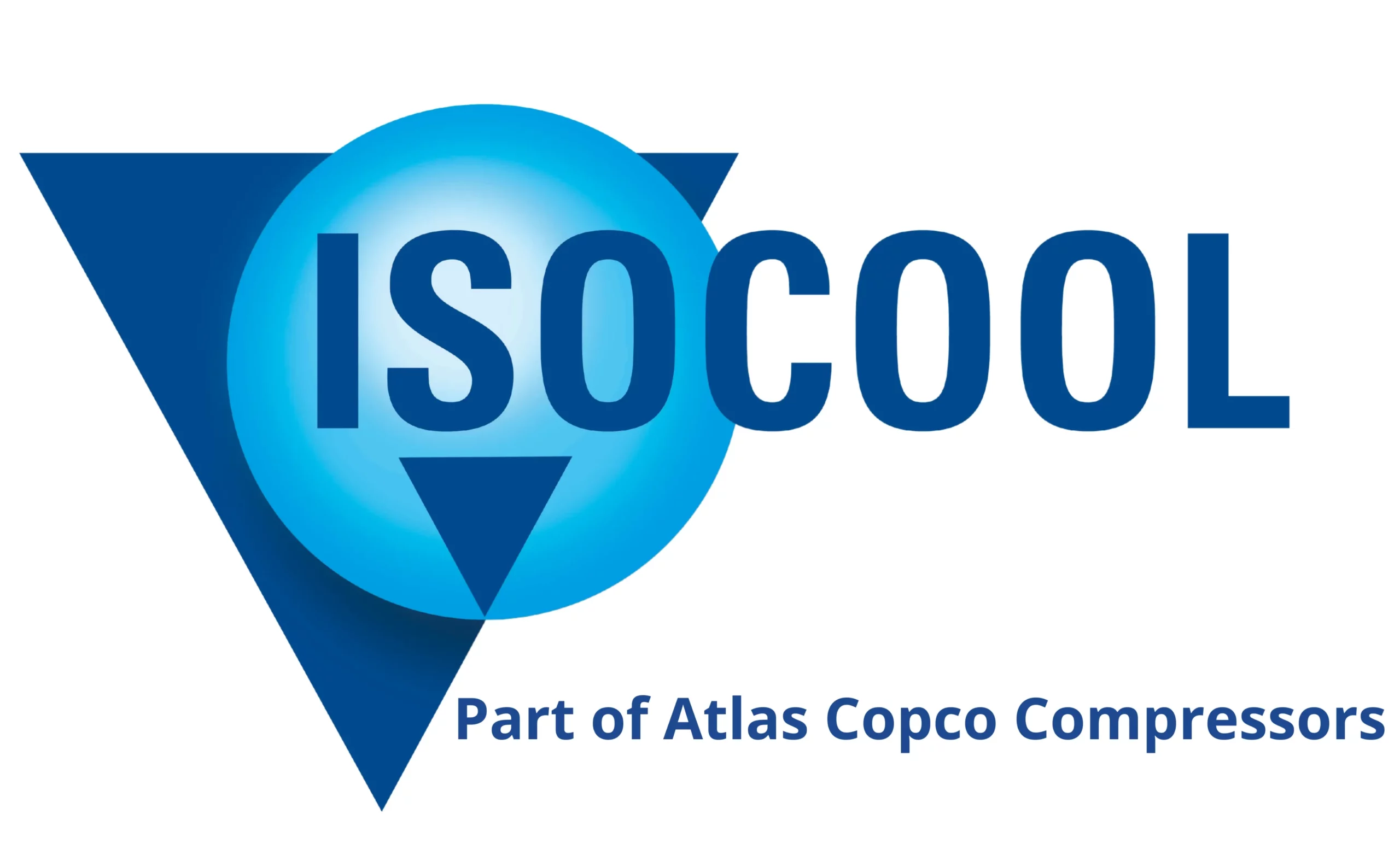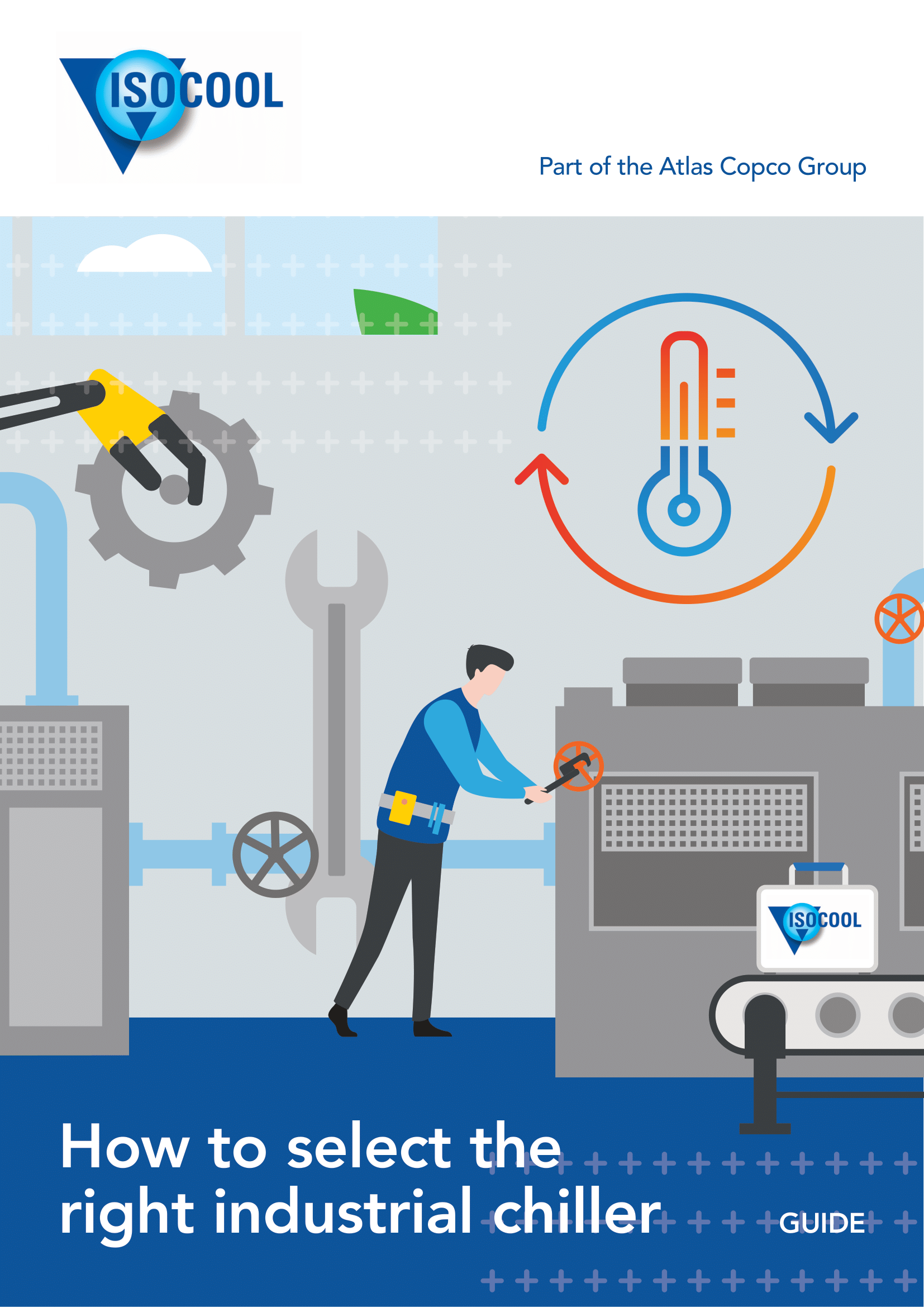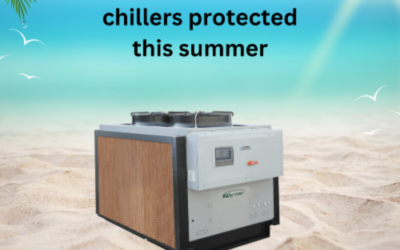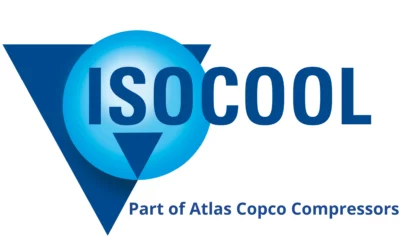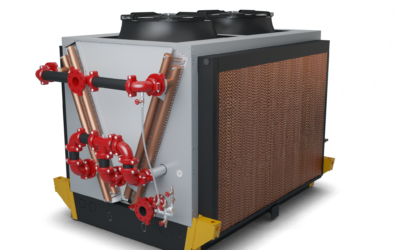Industrial chillers play a vital role in manufacturing processes, particularly in situations where production downtime due to excess heat is unacceptable. In recent years, there have been significant advancements and innovations in the design, performance, and efficiency of industrial chiller systems. This comprehensive guide explores the importance of selecting the right chiller and highlights the latest developments in this field.
Importance of Choosing the Right Industrial Chiller:
When it comes to installing an industrial chiller, its ability to provide continuous protection and remove heat from valuable and temperature-sensitive process equipment is paramount. Moreover, the implementation of a chiller system allows for water conservation and cost savings by utilizing the plant’s own water supply through recirculation.
Cost savings related to cooling water can accumulate rapidly, especially when process equipment operates for multiple shifts a day. By integrating a chiller into the system, you can eliminate the expenses associated with a monitored municipal water supply and wastewater discharge, leading to significant savings within production budgets. Furthermore, advancements in chiller technology have shortened the capital investment payback period, providing a rapid return on investment over the equipment’s lifetime.
Specifiying a chiller installation:
When determining the specifications for a chiller installation, it is essential to have a comprehensive understanding of the key performance factors that influence the selection of the right product. Several factors must be considered, including the type of process fluid, the desired process cooling temperature, flow and pressure requirements, the operating environment, ambient temperature, the appropriate chiller size, and the spatial constraints of its installation location.
Process Fluid Performance:
The main factors to bear in mind when considering the appropriate cooling fluids for a process are their performance characteristics and their equipment compatibility. The performance of a cooling fluid is based upon its properties at a given temperature. The relevant parameters are specific heat, viscosity, and freezing/boiling points. There is a direct relationship between specific heat and cooling capacity. In order to maintain system integrity and prolong optimum performance, mixing a percentage of ethylene or propylene glycol with water (typically in the 10 to 50% range) is recommended when low or high setpoint temperatures are required.In terms of compatibility, the potential for corrosion and the early degradation of seals are common failure modes for incorrectly sized systems. That is why the materials of construction and the nature of fluids should be an important consideration, and why inclusion of a corrosion inhibitor in the cooling fluid is recommended.
However, in the latest developments of chiller technology, the storage tank and hydraulic parts of centrifugal pumps are constructed in stainless steel to prevent process water contamination with rust particles, as well as provide higher levels of reliability and temperature control. Similarly, state-of-art, all-aluminium microchannel condensers are designed to provide long life without corrosion and require 30% less refrigerant charge in comparison to other types of heat exchanger.
Cooling Fluid Temperature:
When configuring an industrial cooling system, it is crucial to consider the lifespan of the pump, as well as the pressure loss across the system and the required flow rate, which are primarily determined by the size and performance of the pump.
Pressure: Using an undersized pump will result in reduced fluid flow throughout the cooling loop. If the chiller is equipped with internal pressure relief, the flow will be redirected away from the process and back into the chiller. However, without internal pressure relief, the pump will strive to generate the necessary pressure, operating at what is known as dead-head pressure or limit. This condition can significantly shorten the pump’s lifespan. When liquid ceases to flow, the temperature inside the pump rises, leading to vaporization and impairing the pump’s cooling ability. This can cause excessive wear on bearings, seals, and impellers.
Determining the pressure loss across a system involves installing pressure gauges at the process’s inlet and outlet and applying pump pressure to obtain values at the desired flow rate.
Flow rate: Insufficient flow through the process will result in inadequate heat transfer, preventing the effective removal of heat required for safe operation. As the fluid temperature surpasses the setpoint, surface and component temperatures will continue to rise until reaching a steady-state temperature higher than the initial setpoint.
Most chiller systems provide details on pressure and flow requirements. When specifying the necessary heat load removal during the design phase, it is crucial to consider all hoses, fittings, connections, and changes in elevation within the system. Inadequate sizing of these auxiliary components can significantly increase pressure requirements.
Chiller operating environment:
Here’s the revised and optimized version of the paragraph:
Ambient Temperature: The ability of an air-cooled chiller to dissipate heat is influenced by the ambient temperature. The refrigeration system relies on the temperature difference between the ambient air and refrigerant to facilitate the condensation process and transfer heat. When the ambient air temperature rises, it reduces the temperature differential (ΔT), thus decreasing the overall heat transfer. Even for chiller models with a liquid-cooled condenser, high ambient temperatures can still have adverse effects on crucial components like the compressor, pump, and electronics. These components generate heat during operation, and elevated temperatures can shorten their lifespan. As a general guideline, the maximum recommended ambient temperature for non-exterior rated chillers is typically 40°C.
Spatial Constraints: Adequate air circulation space around the chiller is essential to maintain the appropriate ambient air temperature. Without proper airflow, the recirculation of insufficient air volume causes rapid heating, negatively impacting chiller performance and potentially leading to damage to the unit.
Why size is important:
Here’s the revised version of the paragraph:
Selecting the appropriate size of a chiller is a critical decision. An undersized chiller will fail to effectively cool the process equipment, resulting in unstable process water temperature. On the other hand, an oversized chiller will operate less efficiently and lead to higher operating costs.
To determine the correct unit size for the application, it is necessary to consider the flow rate and the heat energy added to the cooling medium by the process equipment. This heat energy is measured as the change in temperature (∆T) between the inlet and outlet water.
The formula for calculating the required power is: Heat energy per second (or power) = mass flow rate × specific heat capacity × ∆T. The specific heat capacity of water is typically 4.2 kJ/kg·K, but if glycol additives are present, this value increases to 4.8 kJ/kg·K. It is important to note that 1K is equivalent to 1°C, and the density of water is 1 (i.e., 1 liter of water volume = 1 kilogram of water mass).
For example, let’s consider a water flow rate of 2.36 liters per second (8.5 m3/hr) with a temperature change of 5°C. The calculation would be as follows: Heat Energy per second (kJ/s or kW) = 2.36 l/s (Flow Rate) × 5°C (∆T) × 4.2 kJ/kg·K (Specific Heat Capacity of pure water). Therefore, the required chiller size would be 49.6 kW.
Alternatively, if the heat load to be cooled is already known, the formula can be rearranged to determine the achievable temperature difference (∆T) with different flow rates, which can be achieved with different pump sizes. It’s important to consider other factors that may influence the size selection, such as future plant expansion, exposure to high ambient temperatures, or location at high altitudes.
Maintenance, safety and control:
In the latest generation of advanced industrial chillers, emphasis is placed on features such as ease of maintenance, operational safety, and intelligent control and connectivity.
For instance, these chillers are equipped with IP54-rated, sound-attenuated canopies that allow for both indoor and outdoor operation, even in extreme ambient temperatures as low as -45°C. They are designed with convenient access to installed components, with refrigeration systems located in the front and the cooling water circulation assembly in the back. The wide canopy doors and intelligent layout contribute to reduced maintenance time and easy inspection, minimizing the risk of breakdowns. Innovative models available in the market incorporate various safety devices such as flow and level switches, thermal probes, pressure probes, crankcase heating, and strainers, ensuring secure operation of the chiller.
Furthermore, these advanced chillers feature fully hermetically sealed refrigeration systems, eliminating the need for refrigerant gas maintenance and preventing leaks. According to UK FGAS Regulations, annual inspections (and bi-annual inspections for larger refrigeration systems) by FGAS certified engineers are required. The inclusion of a phase sequence relay ensures that there is no risk of compressor damage due to incorrect wiring. The touch screen controller in these new designs operates with energy-efficient algorithms, consolidates all chiller sensors into one system, and promptly notifies users in case of deviations from operating parameters.
Complete connectivity is achieved through built-in smart remote monitoring capability, available for chiller sizes of 11 kW and above. This feature provides real-time machine data to users in a clear format, ensuring optimal efficiency of the chiller.
Conclusion:
In general, potential users of an industrial chiller system are advised to take into account the conditions in which the process chiller will be used, and the process for which it will be used. This will help to identify the features most needed in the system.
It is also wise to consider the possibility of expansion in the future. If the amount of heat output by one machine is increased, then the cooling power of the chiller has to be increased accordingly. If there is a variable heat rate, choose the kW rating that can handle the highest heat output.
ln summary, taking all of these considerations on board, recognising the important technological advances, and the availability of chiller suppliers who incorporate them in their product offering, all helps in determining the optimal industrial cooling system for any particular application.
